Table of contents

Having a good material makes all the difference when it comes to cooking, but the biggest doubt in these moments is: how to clean a burnt pan? Each type of pan or stain requires a specific cleaning method.
Pans with very burnt bottoms need more aggressive products, while more superficial stains are easier to clean. But don't worry: we have separated 11 tried and tested methods to clean a burnt pan and make it shine again.
See_also: Do-it-yourself: How to paint and restore wooden furniture1. with detergent
Materials required
- Detergent
- Polyester Sponge
Step by Step
- Spread detergent all over the bottom of the pan
- Add water until all stains are covered
- Cover and cook over low heat
- Let boil for 10 minutes and turn off the heat
- Let it cool down and rub it with a sponge
- If the stain persists, repeat the process
Easy and fast, this method is great for removing food residue or grease stains from stainless steel and aluminum cookware.
2. with Lux White soap
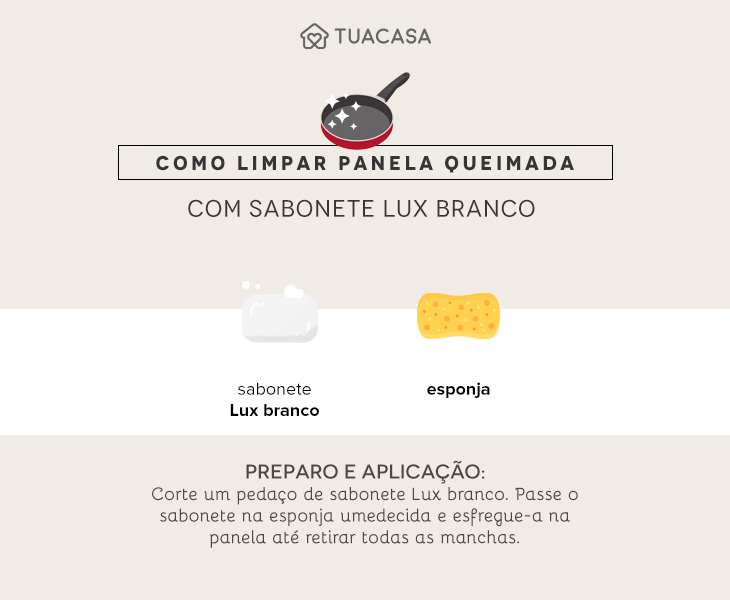
Materials required
- Lux White Soap
- Sponge
Step by Step
- Cut a piece of white Lux soap
- Put the soap on the moistened sponge
- Rub the sponge into the pan until all stains are removed
Did you get the food residue out, but the stains persist? This method is great for light to medium stains on aluminum cookware.
3. with water and salt
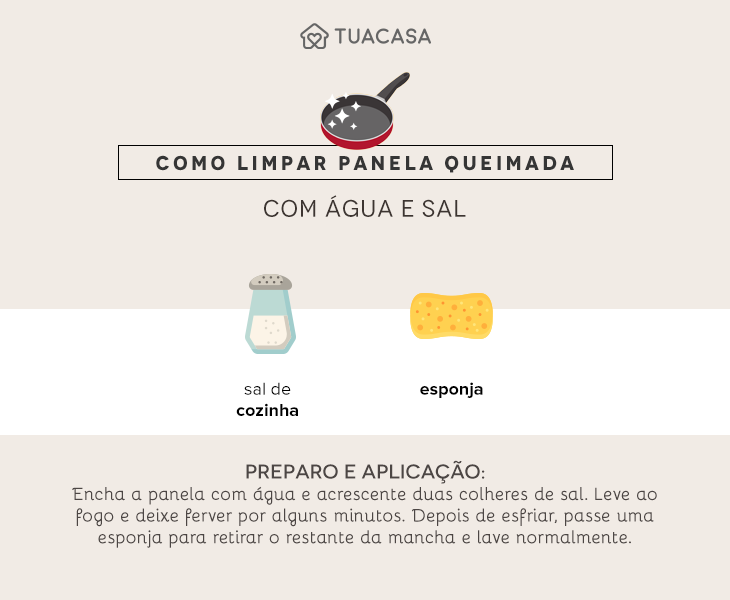
Materials required
- Cooking salt
- Sponge
Step by Step
- Fill the pan with water
- Add two tablespoons of salt
- Bring to the boil and let it boil for a few minutes
- Wait for it to cool down
- Use a sponge to remove the rest of the stain
- Wash as normal
Water and salt are excellent for getting stains and food residue stuck to aluminum pans.
4. with lemon slices
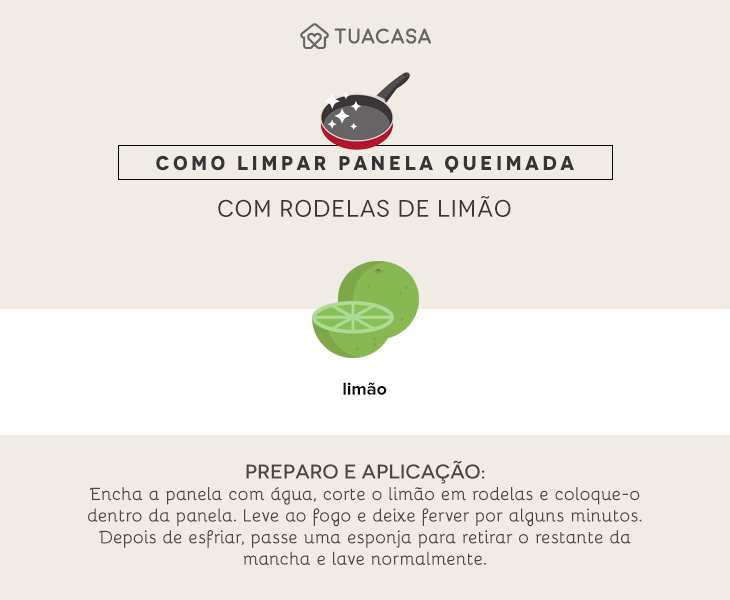
Material required
- Lemon
Step by Step
- Fill the pan with water
- Slice the lemon and place it in the pan
- Bring to the boil and let it boil for a few minutes
- Wait for it to cool down
- Use a sponge to remove the rest of the stain
- Wash as normal
If you have managed to remove the food residue, but the stains have persisted, invest in lemon water, which is perfect for cleaning stainless steel pans and leaving them shining like new.
See_also: New Year's Eve Decoration: 50 Bright Ideas for New Year's Eve Celebrations5. with tomato sauce
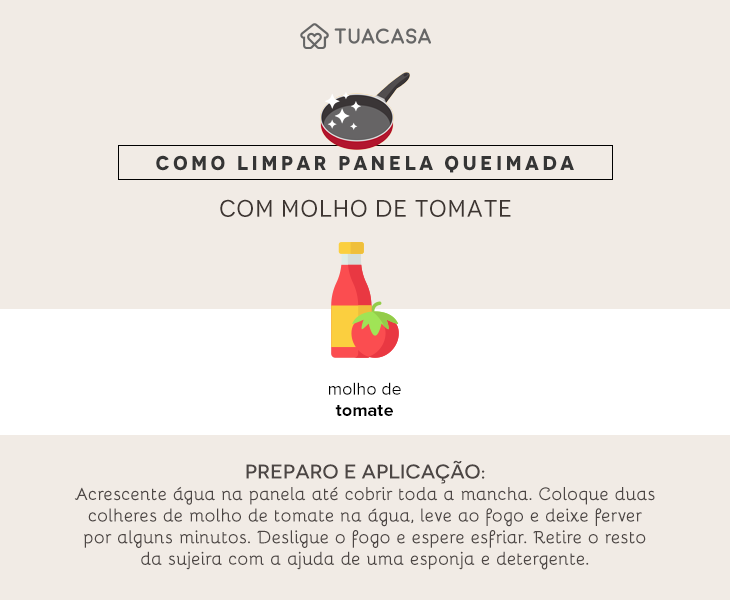
Material required
- Tomato Sauce
Step by Step
- Add water to the pot until the entire stain is covered
- Put two tablespoons of tomato sauce in the water
- Bring to the boil and let it boil for a few minutes
- Turn off the heat and wait for it to cool down
- Remove the rest of the dirt with the help of a sponge and detergent
Tomato sauce is great for removing burnt sugar from pans. And the best thing: it can be used on stainless steel, aluminum, Teflon or ceramic. If you don't have tomato sauce at home, don't worry: chopped tomatoes have the same effect.
6. with white vinegar

Materials required
- White vinegar
- Sponge
Step by Step
- Pour vinegar into the pan, covering the entire burnt part
- Bring to a boil and boil for 5 minutes
- Wait until it cools down and empty the pan
- Scrub with a soft sponge
Vinegar is the darling of household cleaning and can also be used to remove stains from stainless steel or aluminum pans.
7. with baking soda
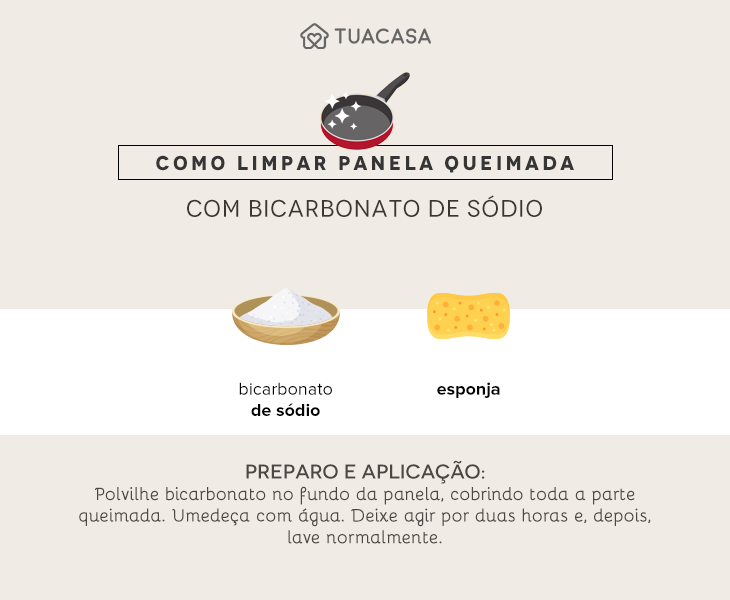
Materials required
- Sodium bicarbonate
- Sponge
Step by Step
- Sprinkle bicarbonate on the bottom of the pan, covering the entire burnt part
- Moisten with water
- Leave it for two hours
- Wash as normal
Bicarbonate is excellent for cleaning burnt and stained pans and can be used on both stainless steel and aluminum pans.
8. with vinegar and baking soda

Materials required
- Sodium bicarbonate
- White vinegar
- Soft sponge or brush
Step by Step
- Pour vinegar over the entire bottom of the pan
- Add 4 tablespoons of baking soda
- Boil for 5 minutes
- Wait until it cools down and rub the sponge or brush on the bottom of the pan
- If the stain does not come out, repeat the process
The combination of baking soda and white vinegar guarantees a perfect cleaning of the burnt pan.
9. with paper towels
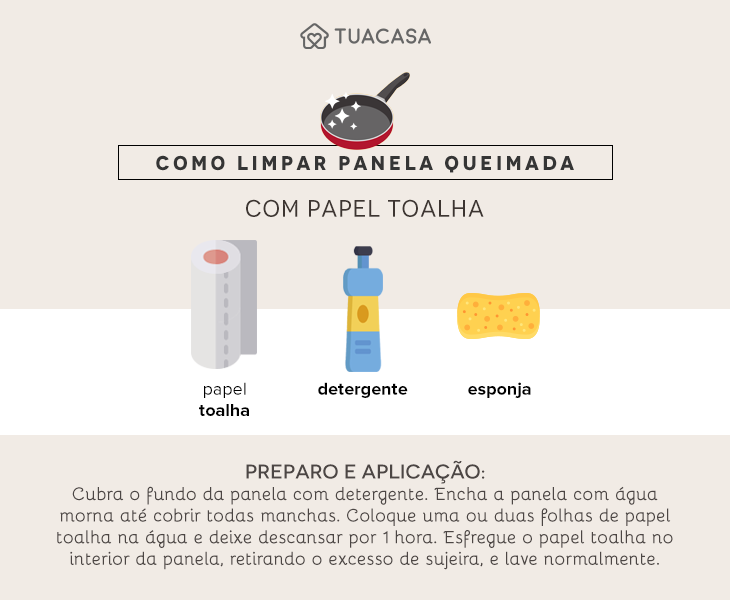
Materials required
- Paper towel
- Detergent
- Kitchen sponge
Step by Step
- Cover the bottom of the pan with detergent
- Fill the pan with warm water until all stains are covered
- Put one or two sheets of paper towel in the water
- Let it rest for 1 hour
- Rub the paper towel inside the pan, removing excess dirt
- Wash as normal
The paper towel can be used to remove grease stains, food residue, and burns from any type of pan: stainless steel, aluminum, or nonstick.
10. with aluminum foil
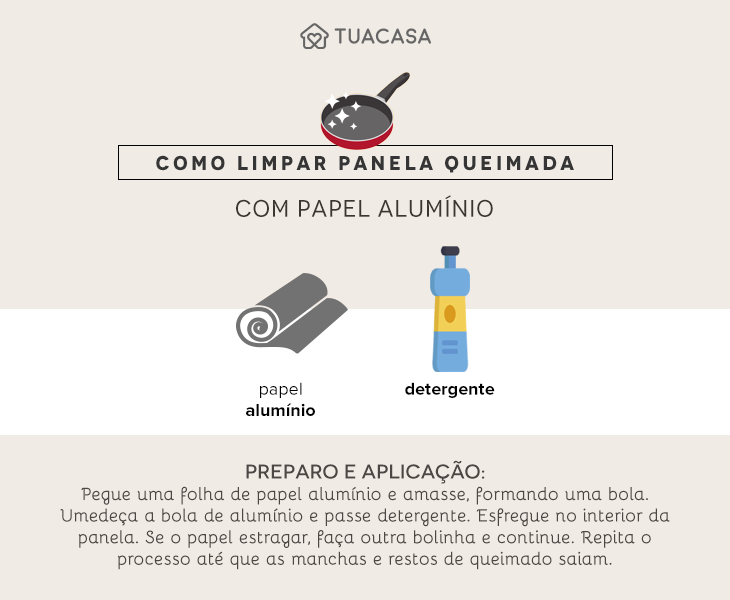
Materials required
- Aluminum foil
- Detergent
Step by Step
- Take a sheet of aluminum foil and crumple it into a ball
- Moisten the aluminum ball and wipe it with detergent
- Rub it on the inside of the pan. If the paper breaks, make another ball and continue
- Repeat the process until the stains and burn residue come off
More aggressive than the previous procedure, aluminum foil can also remove food residue or grease stains. Since stainless steel pans scratch easily, it is best to use this method only on aluminum pans.
11. sanitary water
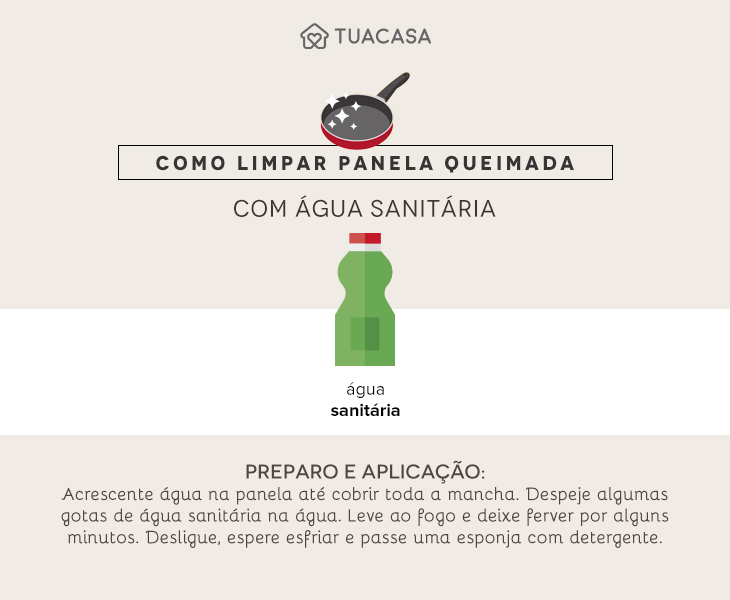
Material required
- Sanitary water
Step by Step
- Add water to the pot until the entire stain is covered
- Pour a few drops of bleach into the water
- Bring to the boil and let it boil for a few minutes
- Turn off, wait until it cools down and then sponge with detergent
Sanitary water should only be used as a last resort, when the pan is badly burnt or when all previous methods have not worked. Remember that it can be toxic to human health, so when the water is boiling, ventilate the room well and try not to breathe in the steam released by the mixture. Also, don't forget to wear rubber gloves.
Other important tips
- Before you go to any of the above methods, wash the pan as normal and try to remove the food residue with a sponge and detergent.
- Avoid using abrasive materials such as steel wool and soaps; stainless steel pans scratch easily, and aluminum pans wear out with the use of these materials.
- Always allow the pan to cool down naturally before continuing any procedure. This prevents it from creasing or deforming.
Burned pans can leave food tasting bad, so it is important to know how to clean them before using them again. When necessary, follow the tips above and ensure a naturally flavored meal and a shiny pan!


